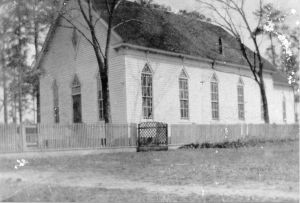Today is Sunday, the Christian Sabbath. As is often the case these on Sunday mornings during these troubling times, the subject of war – whether directly or indirectly, in large part or in passing – is mentioned from many Baptist pulpits, South and North.
What does a typical Baptist church look like in the Confederate States of America? Congregations tend to be relatively small. Most are in rural areas. White church members are mostly common folk, especially outside of prominent congregations in the South’s larger cities and towns. Blacks and whites typically worship together (a few larger congregations hold separate services for black members), but are segregated inside the sanctuary, with white members seated on the main floor and black members in the balcony (if available). Men and women often sit separated as well, and many rural meeting houses yet have separate entrances for male and female members. And in some congregations, black members (almost all slaves) outnumber white members.
As to the actual size of Southern Baptist congregations in the Confederacy, Virginia’s churches are the largest overall, followed closely by South Carolina. On the other end of the numerical spectrum, Arkansas churches are the smallest of any state. The averages for 1861 are as follows:
Virginia – 140
South Carolina – 130
Georgia – 82
Alabama – 74
Tennessee – 70
Mississippi – 70
Louisiana – 48
Florida – 46
Texas – 41
Arkansas – 36
As a whole, the average size Baptist church in the Confederacy has 83 members, many of whom are slaves. No other denomination in the South has as many slave members, and in this regard Baptists of the South have much at stake in the war that rages between South and North.
Source: “Our Church Membership,” Tennessee Baptist, October 5, 1861 (link)



